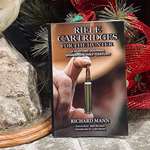
Eating and cooking wild turkey is a different experience from preparing a Butterball bird for Thanksgiving, but wild turkey is absolutely delicious and almost certainly healthier than domestic turkey, and it makes for a fantastic feast. Although we think of turkey hunting as a springtime pursuit, most states—at least 40 by my last count—also offer a fall turkey season, and right now is prime time to take part and bag your own Thanksgiving bird. Some states even allow fall turkey hunting on Thanksgiving day, which is a really cool tradition assuming you’ve got a backup plan for dinner in case things don’t go your way. So how do you hunt fall turkeys?
First, check your state regulations to determine when and where you’re allowed to hunt fall birds and what the restrictions are on gender and legal methods of take. Many states allow you to shoot a hen in the fall, and many states allow you to use a small-caliber rifle if you prefer it over a shotgun. If you’re in a rifle state, that opens up the methods you might choose to employ because it expands your effective range.
Spring turkey hunting is based on breeding habits—you call in a male turkey by pretending to sound like a female turkey. This works because males are focused on breeding in the spring, but not so much in fall. This time of year, it’s mostly about food. Find the food and you’ll find the turkeys, which is where scouting comes in. As you scout, look for tracks, scratchings (where turkeys have raked leaves aside to look for food), droppings, and feathers and droppings under large branches, which can indicate a roost. Early in the season, birds will still be in fields and pastures picking for bugs, but the colder it gets, the more time turkeys tend to spend in the woods eating acorns and berries, so keep that in mind as you look for food sources. You’ll do well if you can locate turkeys by observation and figure out where they’re spending their days and nights. If you know where the turkeys will be, you can set up in an ambush location and shoot one as the flock passes by or feeds into range. You can even use a decoy or two to help draw them in.
Calling is a hit-or-miss proposition in the fall—it might work or it might not, but it won’t hurt to try. This time of year, calling is more about dominance than breeding. You might get an angry gobbler or cantankerous hen to come charging in to a call if they think another turkey has invaded their turf. Remember: In the spring, you’re enticing a gobbler to come looking for love. In the fall, you’re challenging a bird to come looking for a fight. Cater your calling to the birds (hens or gobblers) you’ve seen or heard in the area.
For an alternate method, you can hunt turkeys almost the way you’d hunt upland birds—by walking through the woods hoping to flush one up and shoot it as it flies or runs away. Or, try locating a roosting area and setting up nearby before dawn, as you might in the spring. When the flock flies down for the morning, try a little soft calling or just sit and wait while the birds sort into groups and get moving for the day. You might call one in or get lucky as one walks right past you on its way to join its friends.
This grouping-up effect comes in very handy with one of fall turkey hunting’s most wild-and-crazy tactics: The scatter and regroup method. If you come upon a flock in a place where you can’t get a good shot opportunity or the proper range, try busting the flock up and scattering them in all directions. You can use a dog to do this, where legal, or just straight-up run waving and screaming into the flock like a crazy person. They’ll scatter, but fall turkeys very much want to stick together, so they’ll soon start moving around trying to find each other. After you scatter them, set up in or right around the scatter location and wait for them to come back. You can incorporate a little calling (try yelps) into this technique to try to fool birds into thinking you’re a member of the flock they’re trying to reunite with. With this method, turkeys might be approaching your position from several different directions at the same time. Try to commit to one shot direction and avoid the temptation to change position every time you hear a new bird to your left or right or behind you. If you must move to adjust your setup, do so slowly with extreme caution, because you’ll probably be surrounded by birds.
Whatever method you use, should you be successful, keep in mind that cooking wild turkey is a little different from cooking a farm bird from the grocery store. Wild turkey is quite lean, and it benefits from a 24-hour brine in the fridge or a cooler, followed by frequent basting with fat during roasting. Use a meat thermometer to keep an eye on the temperature (cook to 160 degrees internal temp, then pull and let rest for 10 minutes while the temp rises to 165 and the juices settle), because overcooking will dry it out quickly. You might even choose to spatchcock the bird—that is, cut out the backbone and splat the carcass open so the entire exterior of the turkey is facing up—to reduce cooking time and get every bit of skin nice and crispy before the meat dries out. The legs are full of tendons, so you’d be smart to save those and braise them later to shred the meat for tacos, soup or a casserole. Deep-frying is a good way to go for a wild bird, too, especially if you inject the turkey with seasoned butter before frying. Enjoy!














































